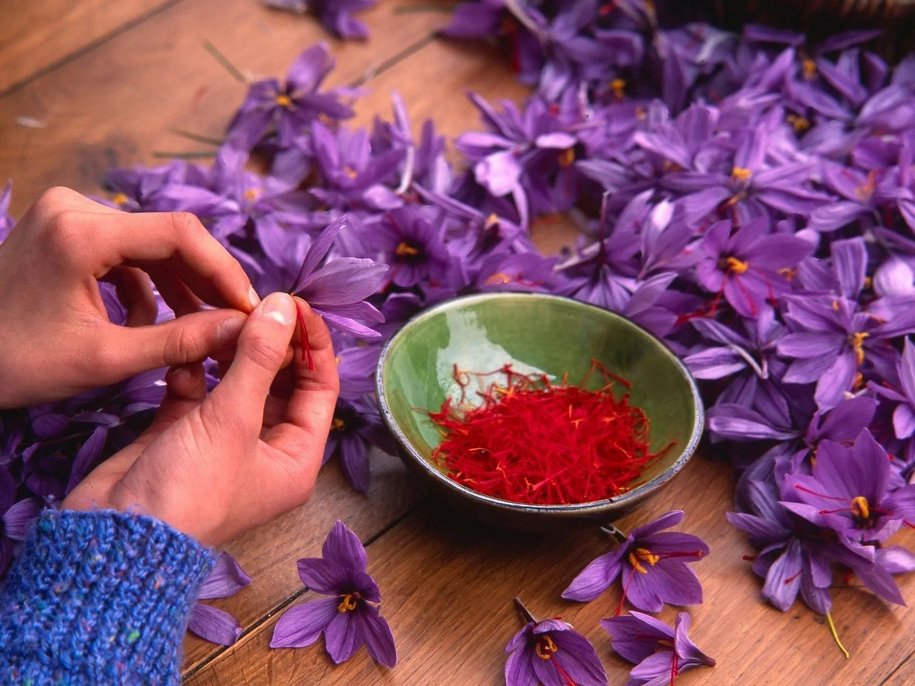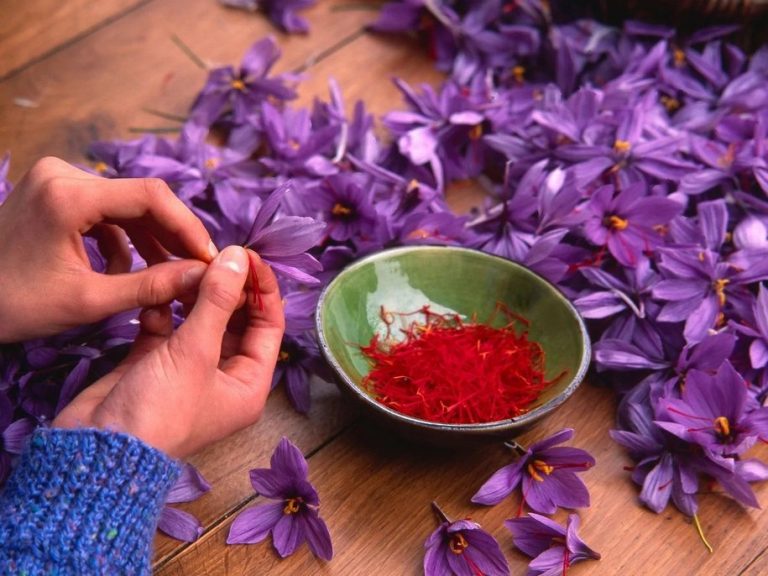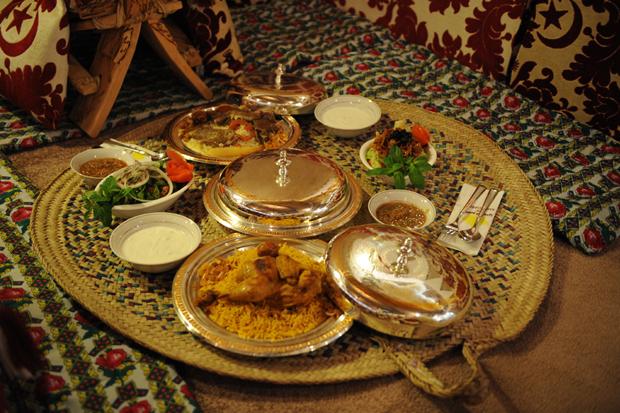Saffron is a luxury spice – but why? Find out more about it here – and also how saffron is produced and used in the kitchen.
Saffron: cultivation and extraction

Saffron is obtained from the crocus species “Krokus sativus”. The crocuses are grown in huge fields, mainly in Iran, but also in Spain.
The flowers only bloom two days a year. The crocus blossoms are picked by hand within two weeks in October or November.
To avoid strong sunlight, the flowers are harvested in the morning on the first day of their flowering period.
Workers pluck the three orange-red pistils from the flower by hand. It is important that only the pistil threads are plucked out.
The more of the light yellow pen gets to the threads, the worse the quality. There are no machines for this work either.
The saffron threads are then dried so that they have a lower water content. The “Spanish saffron” is not dried, but toasted. This is how it gets its aroma.
To store the saffron threads, pack them in airtight cans.
That is why saffron is the most expensive spice in the world
It takes up to 200,000 crocus blossoms to produce one kilo of saffron. These grow on approx. 1000 square meters of cultivation area. In addition, the harvest is carried out entirely by hand without the use of machines. This makes the spice the most expensive in the world. The more intermediaries who want to earn money from selling the saffron, the more expensive it becomes.
We recommend that you buy fair trade saffron. Because you try to do without middlemen so that the farmers receive a fair wage. The “Conflictfood” initiative offers directly traded saffron from Afghanistan. The long transport routes also cause prices to rise. In principle, the longer the transport routes for food, the more harmful greenhouse gases are emitted by ships and airplanes.
Buying saffron: quality criteria and fakes
What is expensive is also worth counterfeiting. Therefore, caution is advised when purchasing. Sometimes chilli threads, dried safflower leaves, safflower blossoms (bastard saffron), marigold petals and sandalwood fibers are mixed in or sold as saffron. Ground saffron is the easiest to counterfeit. Scammers add turmeric, a yellowing agent, paprika powder, or powder from the plants mentioned above. Even stretching with nitrate has already occurred.
The quality criteria are defined internationally with the ISO/TS 3632-1 standard. The chemical and physical properties are regulated by the ISO/TS 3632-2 standard. These standards prescribe a certain level of crocin (the red dye) and safranal (essential oil of saffron) to be present in the threads. With the standard and the values, you can check the quality of the saffron on the packaging:
The crocin value is over 190 in the highest quality. The Spanish saffron is then titled “Coupe” or Category I.
In the worst category IV, the Spanish saffron “Sierra” contains a crocin value between 80-110.
Avoid buying saffron in opaque packaging. The packaging does not tell you whether the threads are deep red and whether there are a few yellow pieces of styli.
Saffron in food

Saffron is very intense, which is why even the smallest amounts ensure an intense taste. With too much saffron, dishes quickly taste bitter. Basically, saffron should not be boiled for long and should only be added to the almost finished meal. Saffron is used for example:
for coloring rice,
for refining cakes and other pastries,
in spanish paella,
for pumpkin soup,
in fish dishes,
in sauces, for example tomato sauce.


